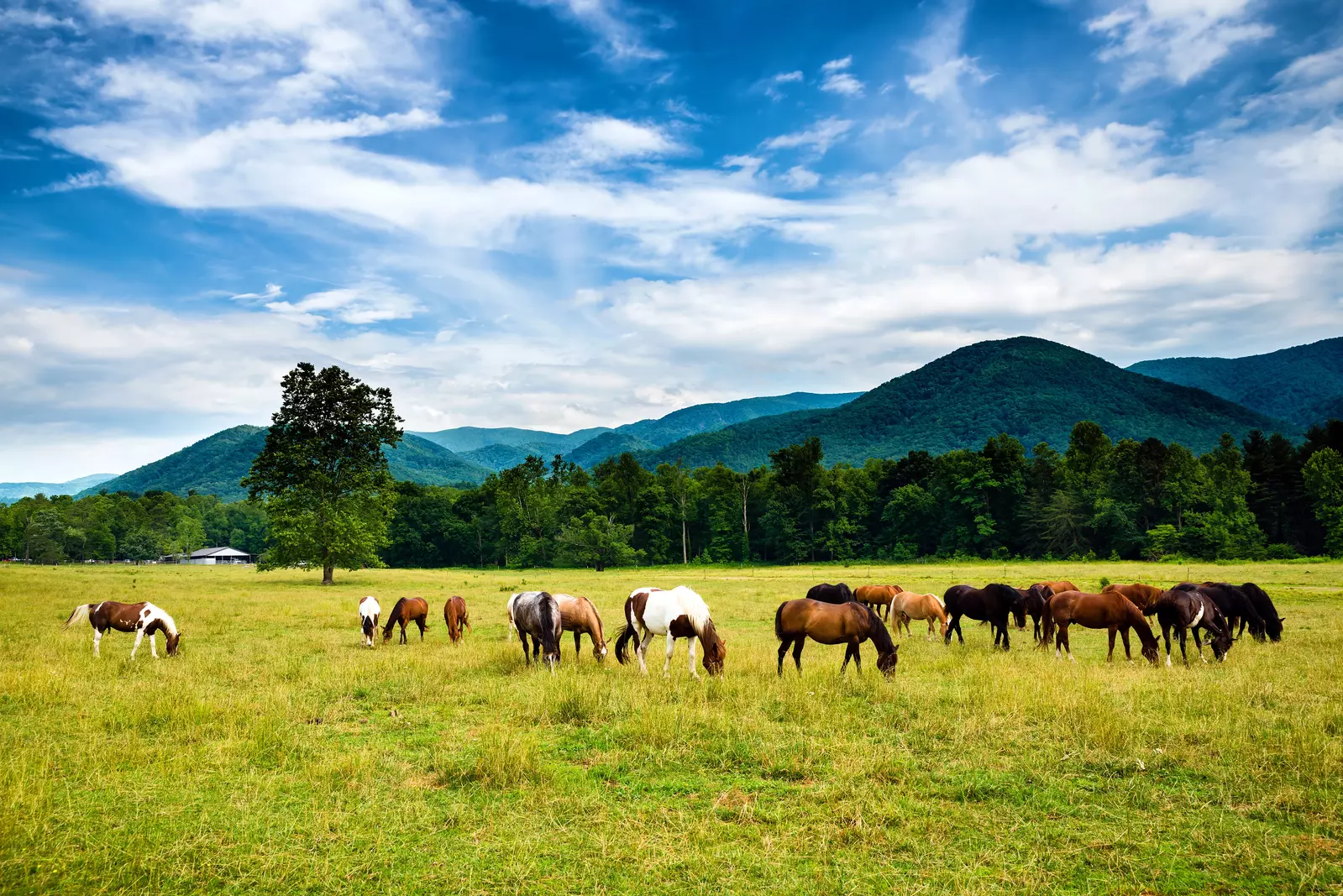The Cherokee, who first called the Great Smoky Mountains their home, named these mountains shaconage (shah-con-ah-jey), or “place of the blue smoke.” Europeans settled the land in the 1800s, followed by loggers and President Roosevelt’s Civilian Conservation Corps in the 20th century.
These mountains hold many mysteries and untold stories, and they have thousands of years of history to tell. While the mountains will always keep some of their secrets, the Cades Cove Visitors Center does an incredible job of helping visitors understand the mountain people who once lived and died here. With historic structures and artifacts on display, visitors can get a sense of what the mountain settlements used to look like and hear about the people who once called Cades Cove and the Great Smokies their home.
History
While some land grants gave acreage to settlers in the late 1700s and early 1800s, the land was not legally supposed to be available to outsiders until the Cherokee Indian Treaty was signed in 1819. The first permanent white settler in Cades Cove, John Oliver, arrived in 1818. More pioneers quickly followed, clearing the land of trees and creating farmsteads and pastureland. Cades Cove soon became the prime spot for farming, with its fertile soil and flat terrain.
 So it might have remained to this day, but for the formation of the national park. In the late 1890s, the idea of creating a national park in east Tennessee’s Appalachian Mountains began to form in the minds of the newly independent, motor vehicle-driving population. While the first attempt to preserve the land failed to gain traction, things began to change in the early 1920s, and, in 1926, President Calvin Coolidge signed into law a bill establishing the Great Smoky Mountains National Park.
So it might have remained to this day, but for the formation of the national park. In the late 1890s, the idea of creating a national park in east Tennessee’s Appalachian Mountains began to form in the minds of the newly independent, motor vehicle-driving population. While the first attempt to preserve the land failed to gain traction, things began to change in the early 1920s, and, in 1926, President Calvin Coolidge signed into law a bill establishing the Great Smoky Mountains National Park.
Exhibits and Tours
Touring Cades Cove will make you feel like you’ve stepped back in time. As you drive the 11-mile loop around the Cove, you’ll see some of the original structures from the European settlement period of the 1790s and early 1800s. Cabins, churches, barns and a grist mill bring the Cove to life, helping to tell the story of mountain life and southern Appalachian culture. About halfway through the loop you’ll come upon Cable Mill. This working grist mill is open from 9 a.m. to 5 p.m. every day from late March through October and on weekends in November. After you see the mill in action, stop by the bookstore and gift shop to buy a bag of corn meal produced right here in Cades Cove. Inside the Cades Cove Visitors Center, you’ll be able to learn all about the tours scheduled for that day. Ranger-led tours, which take place from the spring through the fall, are a great way to find out the Cove’s history and about all the wildlife in the area.
Cades Cove Visitors Center Hours
The Cades Cove Visitors Center is open year round except for Christmas Day. Their  closing times vary based on the season, but they open every day at 9 a.m. The staff are very helpful and love to talk about the Cove, so feel free to ask them questions. Shop for jams, jellies, artwork and other souvenirs at the Great Smoky Mountains Association bookstore. Pick up a book by Wiley Oakley, the mountain man who roamed the Smokies at the turn of the 20th century. Grab a hiking trails map or purchase a self-guided tour of the Cades Cove Loop. The loop takes anywhere from 2-4 hours to complete depending on traffic and how often you choose to stop along the route.
closing times vary based on the season, but they open every day at 9 a.m. The staff are very helpful and love to talk about the Cove, so feel free to ask them questions. Shop for jams, jellies, artwork and other souvenirs at the Great Smoky Mountains Association bookstore. Pick up a book by Wiley Oakley, the mountain man who roamed the Smokies at the turn of the 20th century. Grab a hiking trails map or purchase a self-guided tour of the Cades Cove Loop. The loop takes anywhere from 2-4 hours to complete depending on traffic and how often you choose to stop along the route.
Without a doubt, Cades Cove is one of the most popular spots within the Great Smoky Mountains National Park. In order to get the full experience, you really need to stop at the Cades Cove Visitors Center. Speak with a Park Ranger, go on a tour and grab a few souvenirs of your visit to the mountains.









